Would more parks and trees help L.A. County residents live longer?
UCLA-led study predicts that an equitable ‘greening’ plan could add up to a million years in collective life expectancy
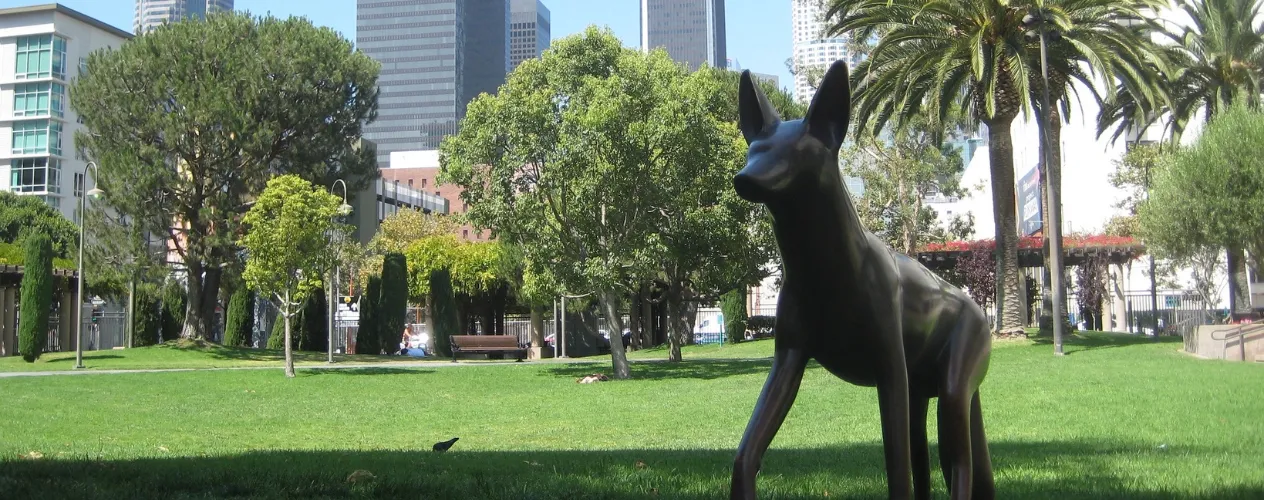
Improving tree coverage and access to parks and green spaces in Los Angeles County, particularly in lower-income communities of color, could significantly boost life expectancy for local residents, according to a new study by UCLA Fielding School of Public Health researchers and colleagues.
The study, published in the peer-reviewed, open-access journal Environment International, is the first in the U.S to combine life expectancy data at the census tract level with data on parks, trees and overall neighborhood vegetation.
Prior research has suggested that parks and greenery have mental and physical health benefits for residents of urban areas, providing clean air to breathe, shade during hot weather, and open and secluded areas for recreation and mental relaxation.
The current findings extend those potential benefits and, the study authors say, provide policymakers with a blueprint for targeted green strategies that could increase longevity among predominantly Black and Latino residents of “park poor” neighborhoods and help reduce health disparities in the region.
“If policies are implemented where they are needed most, there could be a significant decrease in life expectancy disparities across Los Angeles,” said Michael Jerrett, professor of environmental health sciences at the UCLA Fielding School of Public Health and corresponding author of the study.
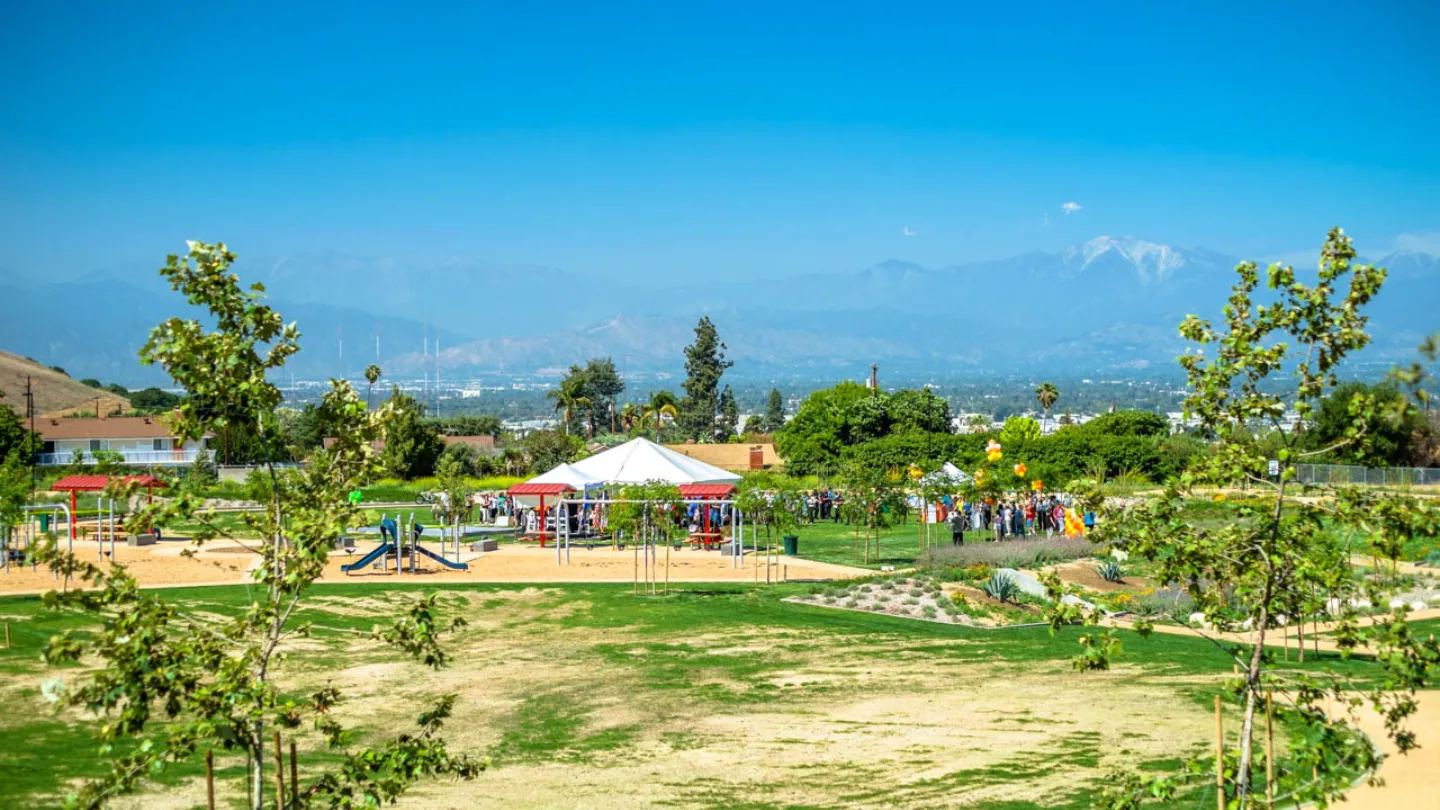
Adding nearly a million years in life expectancy across the county
Using newly available data from the U.S. Small-Area Life Expectancy Estimates Project, the research team developed a model that quantified the relationship between life expectancy and the amount of tree canopy coverage, live green vegetation and accessible park space in Los Angeles County’s census tracts. The data on greenery was drawn from the Los Angeles Department of Parks and Recreation, the U.S. Department of Agriculture, the local environmental organization Tree People and other sources.
The researchers found that socially and economically disadvantaged census tracts tended to have far less tree canopy and green space than other neighborhoods and that roughly two-thirds of the county’s Black and Latino populations live in areas with disproportionately less green coverage. Additionally, tracts in affluent and better-covered areas like Beverly Hills had life expectancies as high as 90, while just 15 miles away, in South Los Angeles communities, median life expectancy was 77.
Controlling for other variables that could impact life expectancy, like smoking, obesity and physical inactivity, the team looked at all of Los Angeles County — a population of roughly 10 million covering 4,000 square miles — and made a number of predictions. Among them:
- If tree canopy and green vegetation were brought up to the county’s median levels in each census tract, residents in areas currently below those medians could gain between 570,300 and 908,800 years collectively in life expectancy.
- If park acreage was increased to the median level of 54 acres in census tracts with below-median park space and tree canopy, approximately 155,300 years in life expectancy could be gained across the county.
- The above 155,300-year total increase includes a gain of more than 110,000 years in life expectancy for Black and Latino residents alone.
However, the researchers found that increasing park access in areas already above the county median for green space and tree canopy, like many Westside neighborhoods, would not have a significant impact on life expectancy.
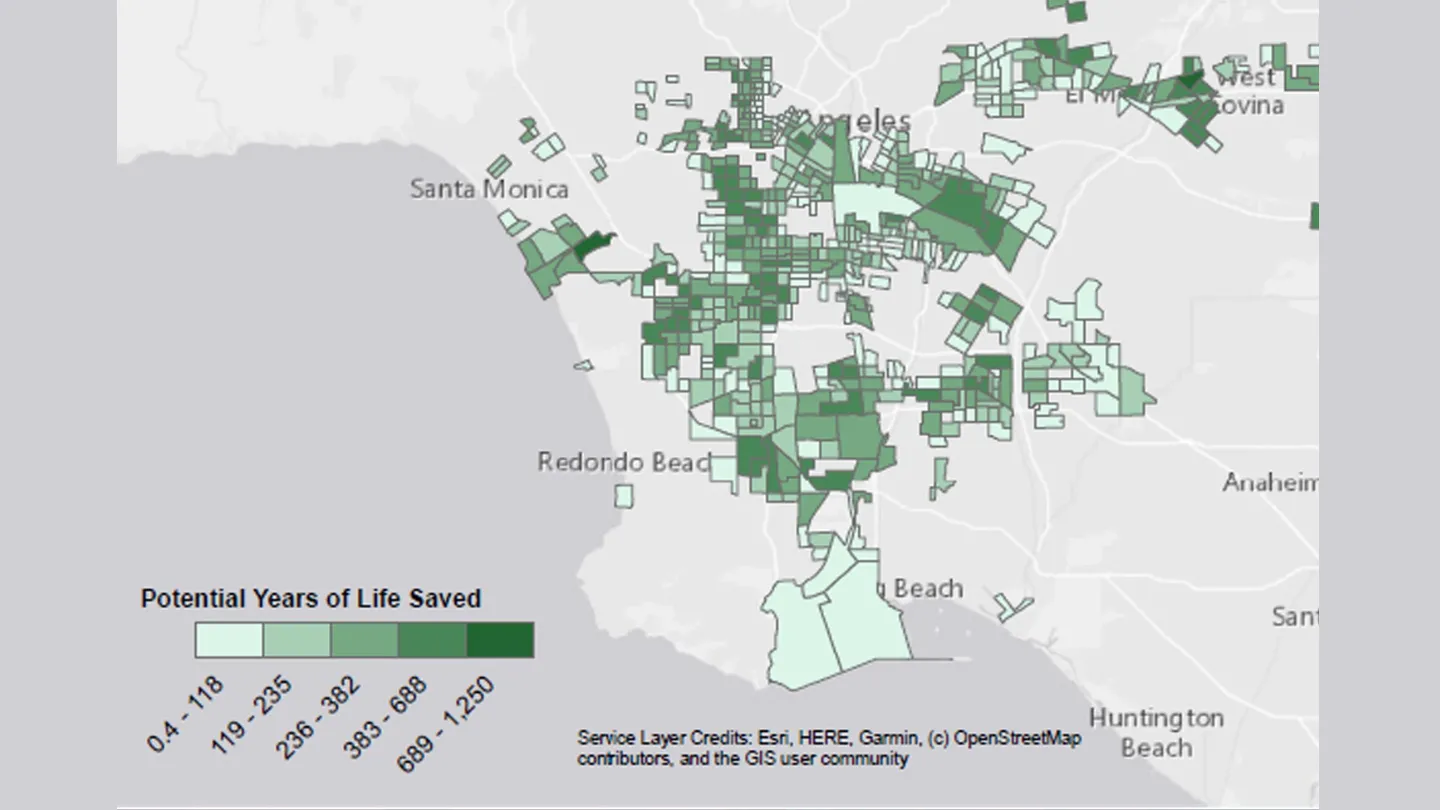
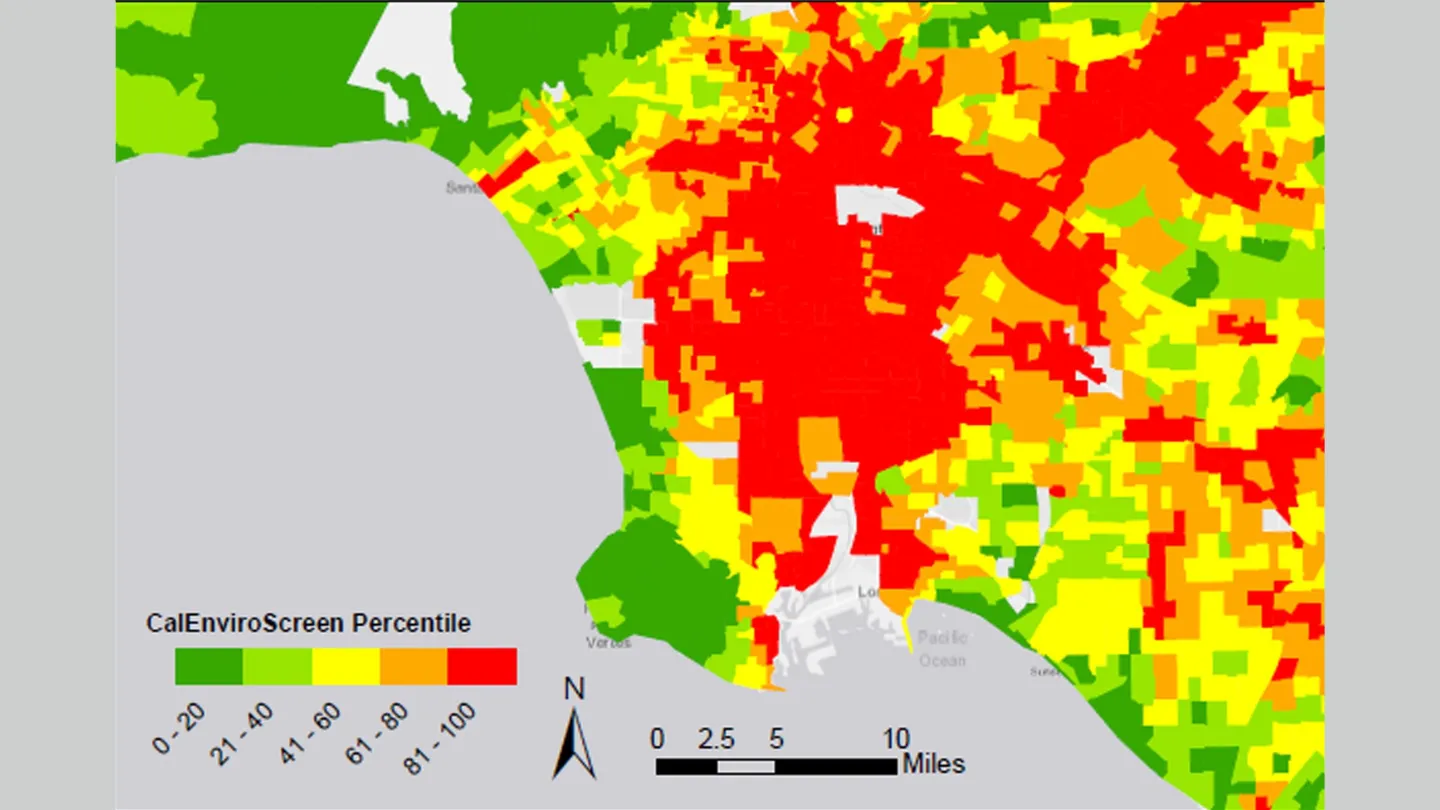
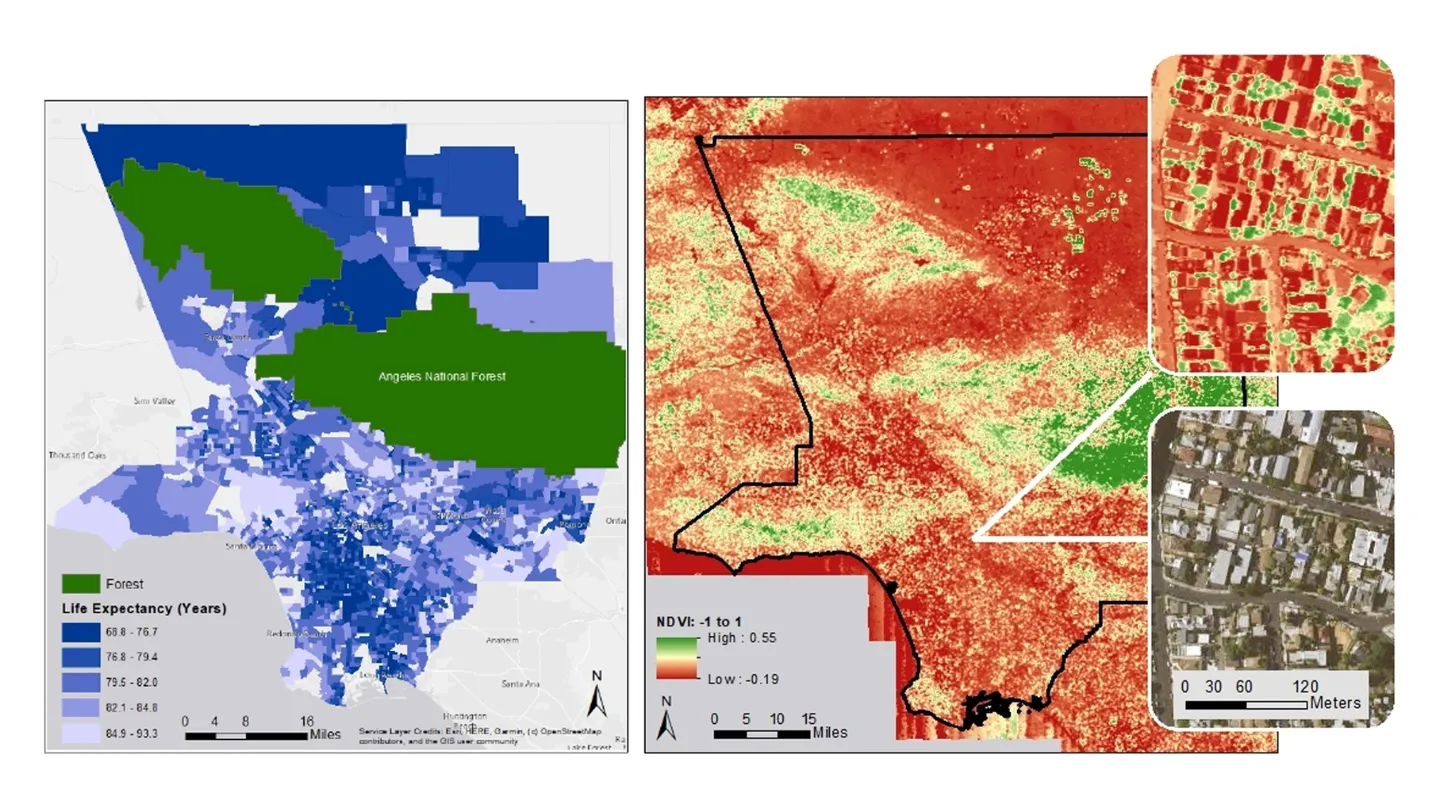
Informing L.A. and California green policies
The study, the researchers said, could help guide proposals by the County Board of Supervisors and local city councils concerning Measure A funding allocations. Approved by county voters in 2016, the parcel tax measure provides millions of dollars annually, in perpetuity, toward the creation and improvement of parks. A third of those funds are set aside to improve park equity.
Findings from the study are already being used in related research funded by the California Air Resources Board to estimate the health benefits of increasing green space and tree canopy in California. Such information will help the board develop a scoping plan for managing the impacts of climate change by investing in parks, tree planting and green space expansion.
Following more than 50 years of increases in life expectancy, the U.S. has seen declines in the past 10 years, likely due to the effects of the opioid epidemic and the COVID-19 pandemic.
“It’s critical to understand modifiable environmental factors, such as access to green spaces, that can increase life expectancy,” said UCLA doctoral candidate Rachel Connolly, lead author of the study.
The study was supported by the Urban Institute through funds provided by the Robert Wood Johnson Foundation: Visualizing and Powering Healthy Lives grant initiative. Additional co-authors included members of the Prevention Institute, a nonprofit focused on building prevention and health equity into key policies and actions to foster health, safety and well-being.